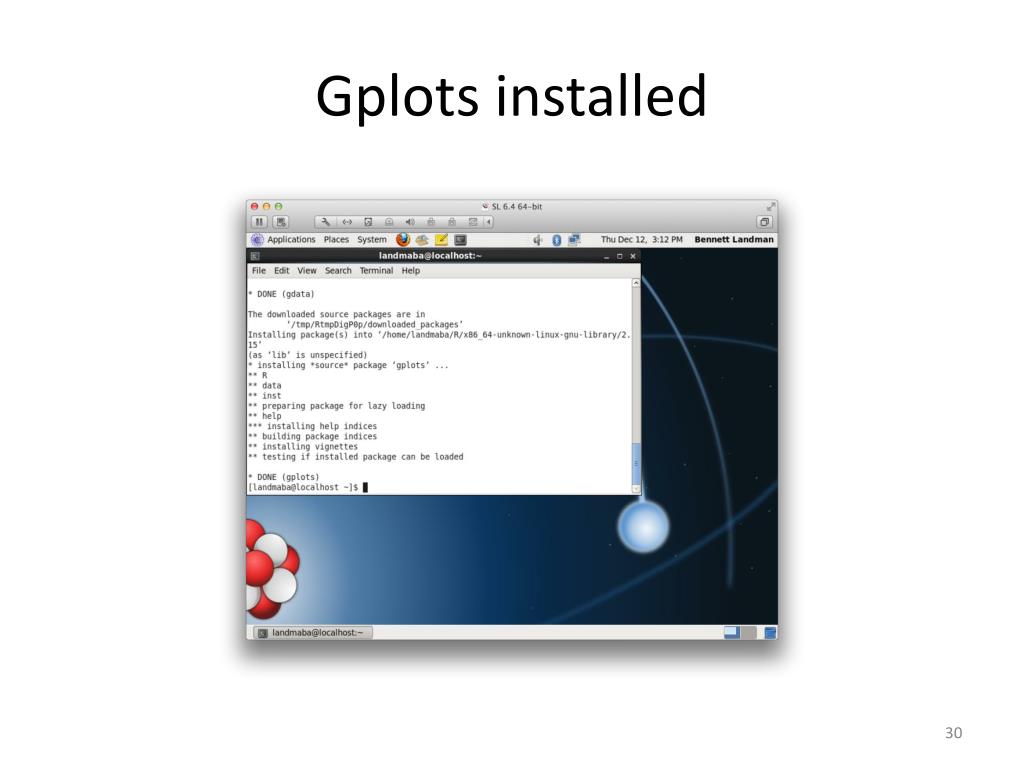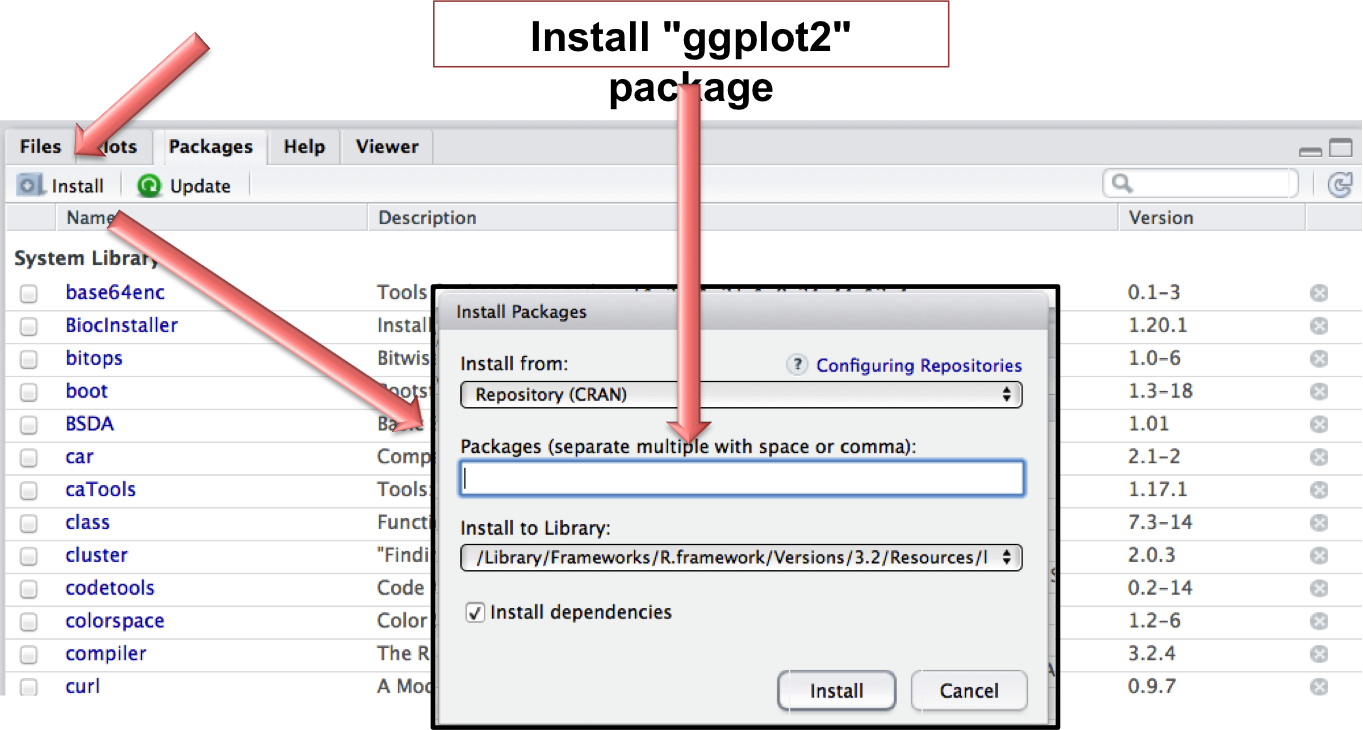Articles
Gplots Install
GPlot

The following will install the existing for Debian and Debian based distributions such as Ubuntu and Mint: apt - get install r - cran - ape r - cran - ggplot2 r - cran - gplots r - cran - mass r - cran - plotrix r - cran - rcolorbrewer r - cran - reshape r - cran - reshape2 r - cran - scales.
- CIPHER requires no manual installation. Just download and unzip the tar file from our GitHub or git clone the repository. The download may be large. The only required manual software installation on your local computer / cluster are Docker and Nextflow.
- Browse other questions tagged r gplots or ask your own question. The Overflow Blog Podcast 307: Owning the code, from integration to delivery.
Sometimes the simplest things can be remarkably difficult to getdone. That was my reaction when I first tried to make a few simple plots.I knew about gnuplot,but it took way too long to make my first useful plot.
Perhaps the most frustrating task was trying to do somethingas simple (to me) as 'plot this data with a blue line' or maybe the dauntingly (:-) complex 'plot this data with a blue lineusing triangles for the data points'.Eventually, I figured out one answer was this fragment:
set style line 10 lt 3 lw 1 pt 8 ps 0.55 plot 'my.data' with linespoints linestyle 10Alright, I'm fed up! No more trying to figure out 'lt 3' versus 'lt 5'and 'pt 3' versus 'pt 22'!I just want a simple command I can understand that does what I want:
gplot.pl -color red -point triangle my.data Sure gplot.pl can't handle the five or ten million complexitiesthat gnuplot can -- but I don't care.All I want is a way to plot some simple columnar data andget a graphic or Postscript file of itand I don't want to spend very many seconds figuring it out.If this is what you want too, gplot.pl is for you too.
GPlot is availableat SourceForge.

The latest version of GPlot is 1.11 and requires at least gnuplot 4.4. Every year or two the GNUPLOT folks change the syntax for some commandor make some other change that is incompatible with an older release.GPLOT doesn't use very many GNUPLOT commands, but nonetheless,every few years, GPLOT breaks.Eventually I catch up, but it means the latest version of GPLOTmight not work with your older GNUPLOT.The answer is to get an older GPLOT. Sorry :-(
Introduction
Gplot is a simple Perl script.It accepts a large set of options to generate a single plotof one or more sets of data (overlaid as necessary).The X and Y axis will be scaled automatically.
Conda Install Gplots
The options are provide in two categories. Most optionsapply to the entire plot (e.g. title) whereas a smallerset can be entered multiple times so that certain valuescan be set for each plot (e.g. color for each plot).This may require careful reading of the options listed below.

Install Package Gplots
Additional information on using gnuplot is available atthese locations (among many others):
Examples
The following examples will give you an idea of whatGplot can do.Take a look at the man page for Gplotfor the complete set of options.In addition, here is the output of the regressiontest and will give you examples of many options.Here are examples of the more common uses.
That should do it. The only file needed is the Perl script, gplot.pl.Copy that somewhere in your path and you should be good to go (assuming you have gnuplot installed).
One last surpise - not all output formats (X window, Postscript etc.)generate something that looks exactly the same. I test with '-type xwin'(the default), but the font and annotation stuff seldom lookslike the final output for something like '-type ps'. That's the way life is with gnuplot - don't let it throw you.
Direct questions to:Terry Gliedt tpg@hps.com(Include 'GPlot' in the subject line so my SPAM filter lets your message through.)
Install Gplots R Windows
This is free software; you can redistribute it and/or modifyit under the terms of the GNU General Public License as publishedby the Free Software Foundation.See http://www.gnu.org/copyleft/gpl.html